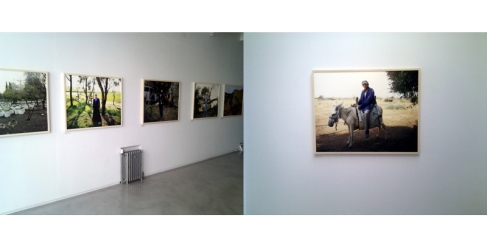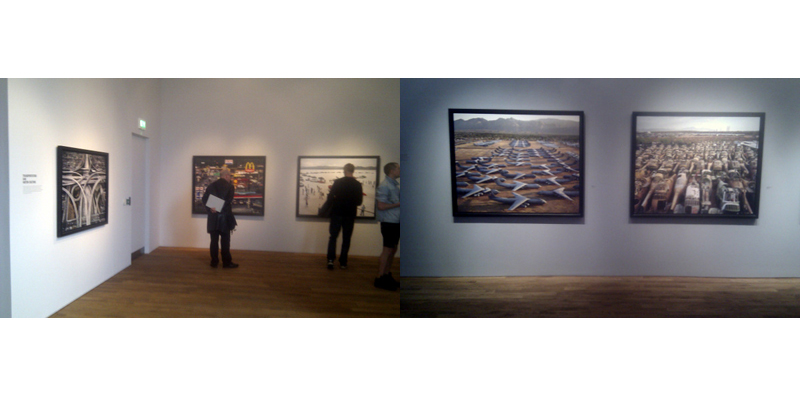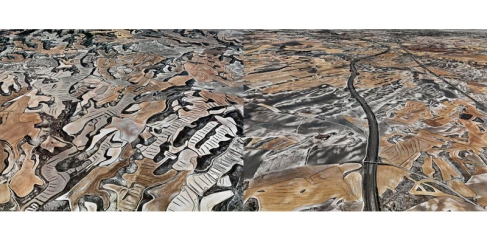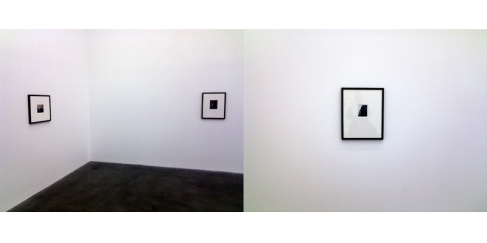Kerim Aytac takes a look at five new London Photography Shows – Review
London galleries are always on the move and the latest trend seems to be focused on Fitzrovia, an area behind Oxford Street. Although this may not be the most atmospheric of settings for a new photography scene to emerge, it serves as testimony to photography’s now robust position in the London art scene.
Margaret Street Gallery is the latest addition to this community. A warm, well designed space with an abundance of natural light, it is a thoroughly welcoming environment that has, with its second show, staked a firm claim.
‘The Quest for the Man on the White Donkey’ by Israeli photographer Yaakov Israel is a mediation on the mythology of his land ,as well as the mythology of myth-making. One morning, according to photographer Israel, he took a picture of a Palestinian man on a white donkey and, to quote, ‘realised I had seen my Messiah’. According to Jewish tradition, it is astride a donkey that the Messiah will herald the second coming. The sighting triggered a photographic quest in the shadow of Frank, Shore and Kerouac, in which Israel sought to discover the soul of his country. Constrained by a far more limited geographical range than his illustrious American predecessors, Israel ended up having to focus on the smaller moments, the smaller spaces in between as he describes them, yet this has only served to make more interesting a project that could have been easily sidetracked by ideological concerns.

The images are refreshingly apolitical, ahistorical even, in that they reflect the ambivalence one often feels about the country to which one is supposed to feel connected. Mixing landscape with portraiture, the images contain abandoned resorts, arid territories and quiet meditations. The subjects of the portraits look back into the camera bemused and inquisitive, their gaze questioning the point, perhaps, of Israel’s (both photographer and country) endeavour. I’m not sure he knows either, but in this brave attempt to encompass the reality of a space so often depicted as saturated with conflict, unresolved and hopeless, the photographer has offered up an uncertainty in its citizens, a nuance that cannot vibe with mainstream media narratives. It’s what this kind of art-documentary work is for: countering the assumption and challenging the given.
Working in a similar vein is eminent image-maker Edward Burtynsky. Of the two Burtynsky shows on at the moment, it is ‘Monegros: Dryland Farming’ at Flowers East gallery that most impresses. His other exhibit is ‘Oil’ at the Photographers’ gallery. Both projects reflect Burtynsky’s desire to raise awareness about the dangerous abuse of the planet’s natural resources (water in the case of the Flowers East show) and its unseen, and unforeseen, consequences. No nuance here then. In the case of ‘Oil’ in particular, there are moments when the work wanders into ‘National Geographic’ territory before veering back into the grand, large-format hugeness for which he is recognised. ‘Oil’ is blockbuster work, clearly designed to be reproduced in countless publications as well as sold from countless gallery walls, oozing production value and technical perfection, yet somehow lacking in punch. Perhaps we have become so accustomed to avoiding the truth these photographs depict that such imagery can no longer get through denial’s thick membrane, butting up against it like a goldfish in a bowl. In ‘ Dryland Farming’ however, by more coherently combining message with aesthetic, the point does squirrel its way in.
To quote the press release, ‘Dryland Farming depicts the agricultural region of Monegros, Spain; a semi-arid terrain, sparsely populated and prone to both droughts and high winds.’ In documenting the effects of centuries-old agricultural methods, Burtynsky raises questions about what might have assumed to be one of the more inoffensive forms of land exploitation. The images are aerial, exposing the at once random and systematic patterning these farms have drawn, abstract-expressionist land art almost. What makes this series work, and effectively communicate Burtynsky’s concern, is their frank beauty. Here, there is discomfort in the scale and the resolution, in the definition of the images. We are not so insignificant in the universe when we can wreak such havoc to the planet, with such order and deliberation, slowly but surely raping the soil of its riches. In a sense, the photographer wants to make the viewer aware of the power humans have, yet the idea that we abuse this power with precision and control, without the wreckless abandon one might more easily use to justify or understand, is what the beauty of this imagery communicates. Cruel symmetries indeed.

Just down the road is ‘A City In The Mind’ by Peter Fraser at Brancolini Grimaldi. Fraser’s stock in trade is a kind of Macro photography in which he focuses on small details in close-up in order to engage with the larger textures of the environment. In this show, soon to be published as a book by the gallery in collaboration with Steidl, Fraser uses his minutiae to paint a portrait of London. He was inspired by an Italo Calvino story in which Marco Polo overcomes linguistic barriers with Emperor Kublai Khan by showing the objects found during his travels instead of recounting them.

The images are so varied, so elliptical in their relations to the concept of ‘London’, as to prevent adequate description here. What matters is the energy between them and the dynamic, sideways glance at culture Fraser manages to inhabit. Simultaneously irreverent and considered, the artist pulls of the immensely difficult trick of making complex relationships seem natural, haphazardly thrown together. A conch here, book spine there, coloured pencils and wiring; it could be London, but then again…Fraser has been around for long time and this show is the product of honed vision. It’s a lot of fun.
Saul Fletcher is an artist who mainly uses photography to document his sculptures, but unlike the purely conceptual out there, he finds median in which the images take on their own spirit. It helps that the sculptures are mounted on his studio wall and consist mainly of found objects arranged artfully, lending themselves to photographic composition, yet the by juxtaposing these with hazy self-portraits and misty landscapes, Fletcher manages to create an ambiguous memoir, a pre-meditated stream of consciousness.

Showing at Alison Jacques Gallery, Fletcher will soon be presented at Sao Paolo Biennale. This is a subtle and delicate show, both in content and presentation, that refers to a late modernist romanticism, where surrealism has ceased to matter, but its poetic qualities remain.

